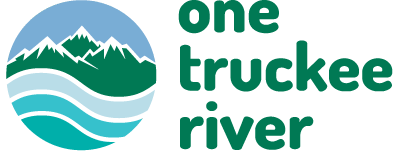Big footprint or little footprint...What will you leave behind?
Or maybe the question should be, what won't you leave behind? What won’t be available to future generations because you used it unwisely?
These are the questions conservationists want you to ask yourself, and the way they help you answer them is with footprints.
We’re talking about ecological footprints. Specifically, water footprints -- but we’ll get more into the nitty gritty of that later.
Let's start with the basics - The Ecological Footprint
The World Wildlife Fund puts it best:
The simplest way to define ecological footprint would be to call it the impact of human activities measured in terms of the area of biologically productive land and water required to produce the goods consumed and to assimilate the wastes generated. More simply, it is the amount of the environment necessary to produce the goods and services necessary to support a particular lifestyle.
Even more simply put, decisions you make in your daily life, no matter how inconsequential they may seem in the moment, will have a varying impact on our planet.
Long shower or short shower? Drive or walk? Cotton or nylon? All of these choices will draw on our natural resources in different ways.
And ecological footprints come in many different sizes. You’ve probably heard about personal footprints. This is the amount of environment needed to get you through your day, and it consists of both direct and indirect uses. A direct use would be the gas you use to drive to work; an indirect use would be the gas it takes to deliver the Amazon Prime package you just had to have by this Friday. This brings us to another type of footprint, the product footprint. Guess what? It takes a lot of time, energy, and resources to make our clothes, grow our food, and produce all of our gadgets, and some are more environmentally friendly than others.
The other two main types of footprints are business footprints and national footprints. Take the concept of the personal footprint, scale it up a little or scale it up a lot and you’ll have one of these two footprints.
Since these "big picture" footprints are very complex, it's often strategic to look at them in a more segmented manner - breaking them down into smaller pieces. For example, one of the more frequently discussed subsets of your total ecological footprint is your carbon footprint (how one’s lifestyle affects carbons emission into earth’s atmosphere). Another example, and the one we're discussing today, is your water footprint.
And why are water footprints so important?
We have a limited volume of resources on the planet, and water is one of our most precious ones.
On a global scale, less than 1% of the earth’s water is readily available fresh water, and here in the Truckee Meadows we live in a high desert climate, which makes water even more precious. According to the Truckee Meadows Water Authority website, we receive only 7 inches of rain per year on average, and for our water supply we largely rely on Lake Tahoe (which could itself be limited by the declines in the future Sierra Nevada snow pack).
It's not a stretch to say that water is a limited resource in our region and could become increasingly limited in the years to come. But local agencies are addressing this through the Truckee River Operating Agreement, which "is intended to increase the operational flexibility and efficiency of reservoirs in the Lake Tahoe and Truckee River basins, thus providing multiple environmental benefits while protecting the exercise of all existing water rights."
Your water footprint is still so important. Knowing our own water footprint and the footprints of the products we use can help us conserve water more efficiently. It gives us the opportunity to see where there is room for improvement and then make it happen.
Okay, I’m ready to think about my water footprint now
First of all, it's vital to remember we can’t just think about direct water use -- showering, washing dishes, sprinklers; we also need to consider indirect water use (also known as virtual water) because it usually makes up over 50% of one's personal water footprint.
Usually when we consider direct water use, the impact will be on the local watershed (in our case, Truckee River). On the other hand, the scope of impact of virtual water can span way beyond the Truckee Meadows.
For example, did you know it takes 700 gallons of water to produce a cotton shirt? Or that it takes 1,850 gallons of water to produce 1 pound of beef? The resources being used to produce these products probably don't come from our own watershed, even though they may be consumed here.
If you’re starting to think calculating this will be overwhelming, don’t worry! Some A+ organizations have done a lot of the heavy lifting for you. Tools like the Grace Water Footprint Calculator will show you what your footprint is compared to the national average and let you play with your answers so you can see where the most room for improvement lies. There are some super helpful graphics, like the one featured below, with data on product water footprints, and articles like this one to help strategize easy changes you can start making today.
If you're curious about water footprints on a broader scale, the National Water Footprint Explorer allows you to compare countries per capita water use and their total water footprint.
The potential scope and depth of water footprints goes much further than explored in this blog, so for all the information you could possibly ask for on this topic, check out the Water Footprint Network and their years of research.
Happy water saving!
Sources:
Natural Resources Defense Council
Truckee Meadows Water Authority
